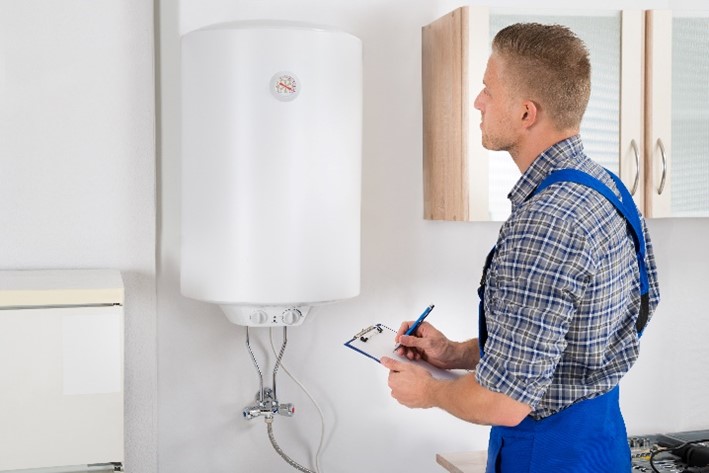Step-by-Step Guide to Caring for Your Home's Hot Water System
Step-by-Step Guide to Caring for Your Home's Hot Water System
Blog Article
What are your insights and beliefs about Water Heater Maintenance Tips You Can't Afford to Forget?

Hot water is important for daily convenience, whether it's for a rejuvenating shower or washing recipes. To ensure your hot water system runs efficiently and lasts much longer, routine maintenance is vital. This post offers practical tips and understandings on exactly how to maintain your home's warm water system to avoid disturbances and expensive repairs.
Intro
Preserving your home's hot water system may seem daunting, however with a few straightforward steps, you can guarantee it operates efficiently for many years to come. This overview covers everything from recognizing your hot water system to do it yourself maintenance pointers and understanding when to call in expert assistance.
Importance of Keeping Your Hot Water System
Routine upkeep not only expands the lifespan of your hot water system however additionally ensures it runs efficiently. Ignoring upkeep can result in decreased effectiveness, greater energy expenses, and also premature failure of the system.
Indicators Your Hot Water System Requirements Upkeep
Knowing when your warm water system requires attention can avoid significant issues. Watch out for indicators such as inconsistent water temperature, odd sounds from the heating unit, or corroded water.
Understanding Your Hot Water System
Before diving right into upkeep tasks, it's useful to comprehend the fundamental parts of your warm water system. Commonly, this includes the hot water heater itself, pipes, anode poles, and temperature controls.
Month-to-month Upkeep Tasks
Regular month-to-month checks can help capture small concerns prior to they escalate.
Purging the Hot Water Heater
Purging your water heater eliminates debris build-up, improving efficiency and extending its life.
Checking and Replacing Anode Rods
Anode rods prevent corrosion inside the tank. Examining and replacing them when worn out is important.
Checking and Readjusting Temperature Setups
Readjusting the temperature level setups makes certain optimum efficiency and safety.
DIY Tips for Maintenance
You can perform numerous upkeep jobs on your own to keep your warm water system in leading condition.
Checking for Leaks
Routinely examine pipes and links for leaks, as these can lead to water damage and higher bills.
Examining Stress Alleviation Valves
Examining the stress safety valve ensures it functions correctly and protects against too much pressure accumulation.
Protecting Pipes
Shielding warm water pipes reduces heat loss and can conserve power.
When to Call an Expert
While DIY upkeep is valuable, some concerns need professional expertise.
Complex Concerns Calling For Expert Help
Instances include major leaks, electric issues, or if your water heater is continually underperforming.
Regular Expert Upkeep Perks
Expert maintenance can consist of extensive inspections, tune-ups, and making certain compliance with safety and security requirements.
Conclusion
Normal maintenance of your home's warm water system is vital for performance, durability, and cost savings. By complying with these ideas and recognizing when to look for expert aid, you can make sure a reputable supply of warm water without unforeseen disturbances.
How to Maintain an Instant Hot Water Heater
Before tinkering with your hot water heater, make sure that it’s not powered on. You also have to turn off the main circuit breaker and shut off the main gas line to prevent accidents. Also turn off the water valves connected to your unit to prevent water from flowing into and out of the appliance. 2. When you’re done, you have to detach the purge valves’ caps. These look like the letter “T†and are situated on either side of the water valves. Doing so will release any pressure that has accumulated inside the valves while at the same time avoid hot water from shooting out and burning your skin. 3. When the purge valves’ caps are removed, you have to connect your hosing lines to the valves. Your unit should have come with three hoses but if it didn’t, you can purchase these things from any hardware or home repair shops. You can also get them from retail stores that sell water heating systems. Read the user’s manual and follow it to complete this task properly. When the hosing lines are connected, open the purge port’s valves. 4. You should never use harsh chemical cleaners or solutions when cleaning your unit. Make use of white vinegar instead. It should be undiluted and you’ll probably use about 2 gallons. 5. Now flush your water heater. This task should probably take about 40 minutes. We can’t give you specific directions for this because the procedure is carried out depending on the type, model and brand of your heater. With that being said, refer to the user’s manual. 6. When you’re done draining the unit, you have to turn off the purge port valves again. Remove the hosing lines that you earlier installed on each of the water valves. Put the valve caps (purge port) back in their respective places and be very careful so as not to damage the rubber discs that are found inside these caps. 7. Now that everything’s back in place, check your user’s manual again to find out how to reactivate your water heating system. 8. Once it is working, turn one of your hot water faucets on just to let air pass through the heater’s water supply pipes. Leave the tap on until water flows smoothly out of it. https://www.orrplumbing.com/blog/2014/september/how-to-maintain-an-instant-hot-water-heater/

We hope you liked our topic on How to Maintain Your Water Heater & Prolong its Life. Thanks for spending some time to read our blog post. Feel free to take the opportunity to distribute this entry if you appreciated it. We treasure your readership.
Get Offer Report this page